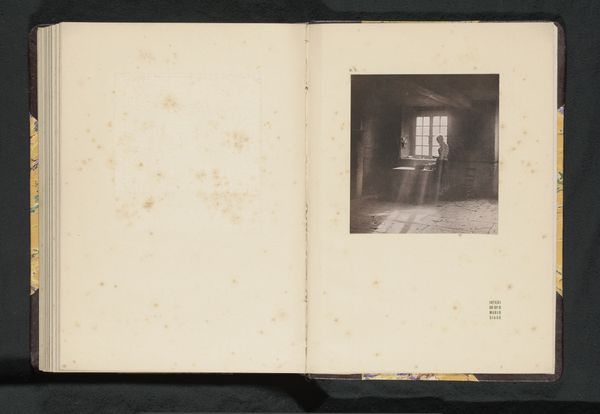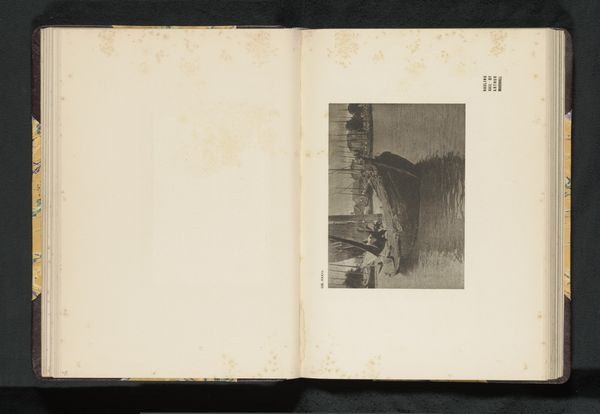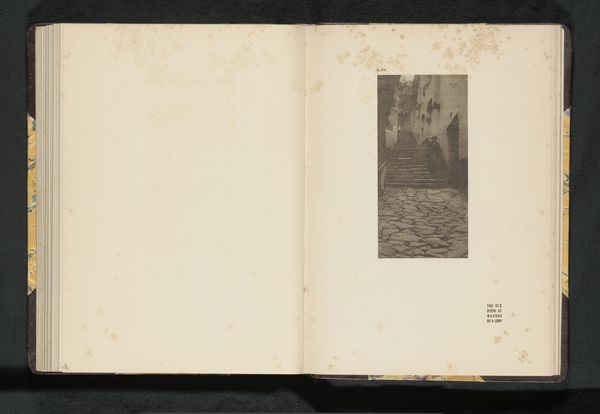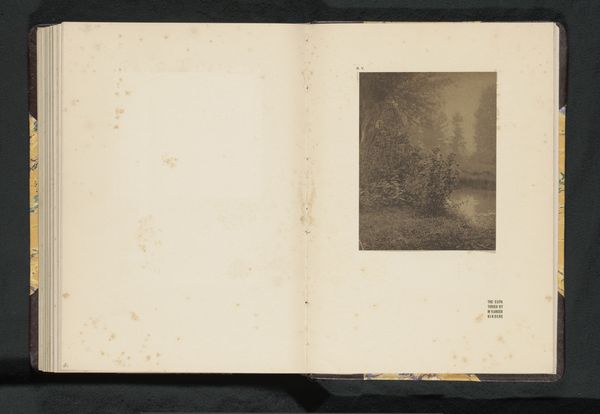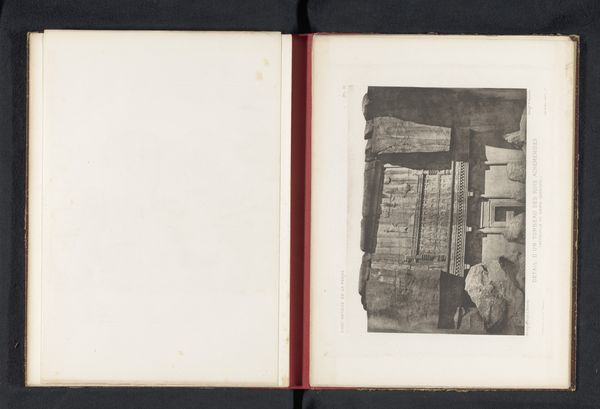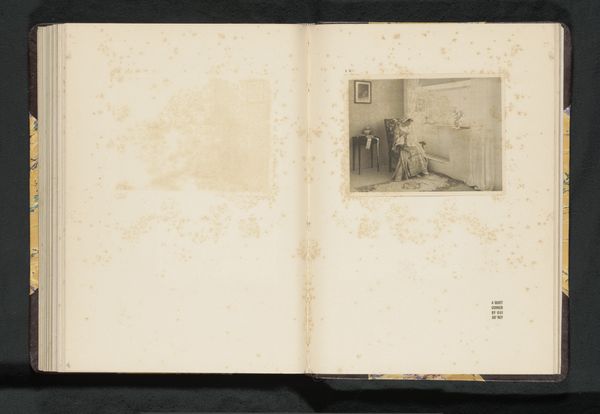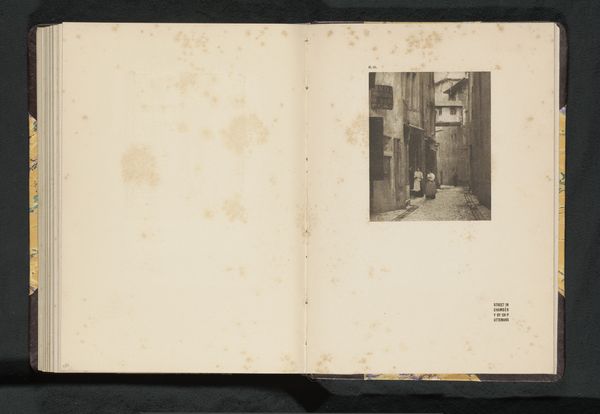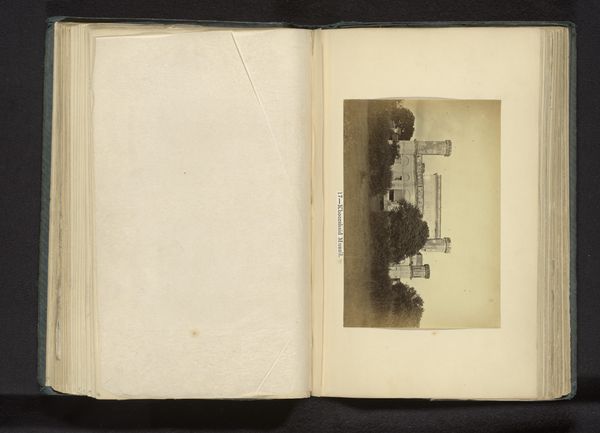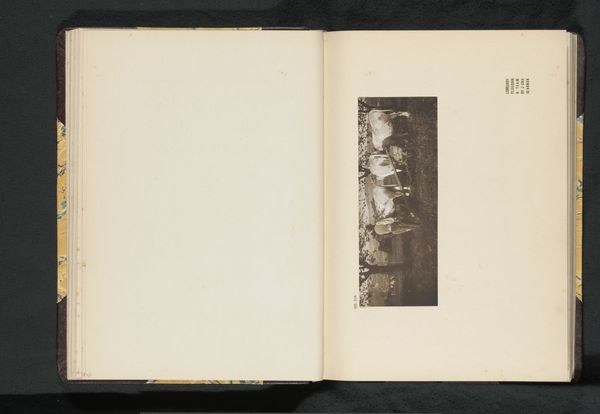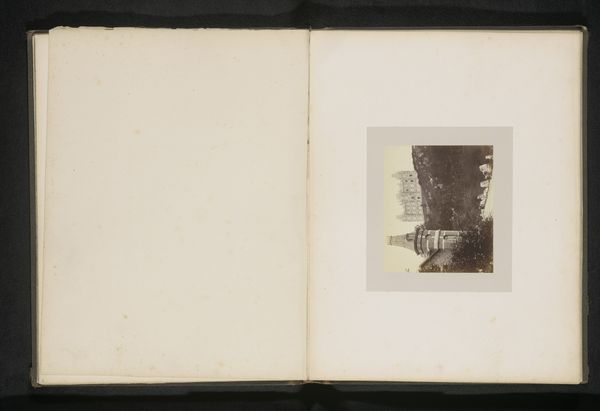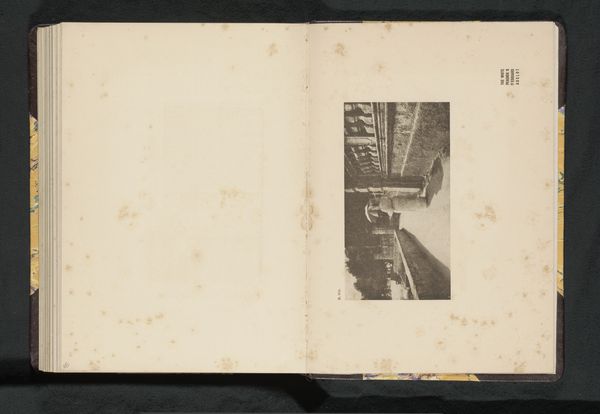
photography, gelatin-silver-print
#
aged paper
#
book binding
#
homemade paper
#
paper non-digital material
#
pictorialism
#
paperlike
#
sketch book
#
landscape
#
paper texture
#
photography
#
personal sketchbook
#
geometric
#
folded paper
#
gelatin-silver-print
#
paper medium
Dimensions: height 138 mm, width 114 mm
Copyright: Rijks Museum: Open Domain
Editor: This is “Trappen van de kathedraal van Wells,” or "Stairs of Wells Cathedral," a gelatin-silver print by Frederick H. Evans from before 1905. It's presented in a sketchbook and it’s striking how the image of the stairs emerges from the aged paper. What draws your eye to this particular photograph? Curator: Well, first I see how Evans is not just documenting architecture, but staging a discourse about history, class, and power dynamics inherent in these spaces. The stairway isn't merely a means of ascent; it represents a physical and social stratification. Who has access to the 'higher' spaces, and who is confined to the lower ones? Think about the church at this time, the rise of industrialization, what does this photograph say about England in the early 20th Century? Editor: So, you are seeing beyond the beautiful composition and technique to examine how power might be symbolized here. It definitely has a very geometric but also spiritual quality, which makes me consider how religion, specifically, operates in relation to social structures. How intentional do you think this might be? Curator: Evans was very much influenced by Pictorialism. He thought that photography could operate on the same levels as fine art such as painting. What do you see regarding photographic methods here that suggest an agenda to be 'taken seriously?' Editor: It does seem as though he is not trying to hide the texture or age of the paper; that almost contributes to an effect that calls attention to itself as 'art.' Curator: Exactly! And isn’t it interesting how such choices reflect a conscious decision to engage with contemporary social discourses around class, gender, and access in the public and private spheres? Evans asks us to consider photography as a social actor. Editor: This photograph is far more complicated than I originally considered. Looking at it in terms of the socio-political climate, you've broadened the way I perceive its overall meaning and what the artist was intending. Curator: And, in turn, thinking of it through the lens of photography's growth really opens up many other related questions. It goes beyond just the aesthetics and forces us to consider societal factors in ways I did not imagine at first.
Comments
No comments
Be the first to comment and join the conversation on the ultimate creative platform.
